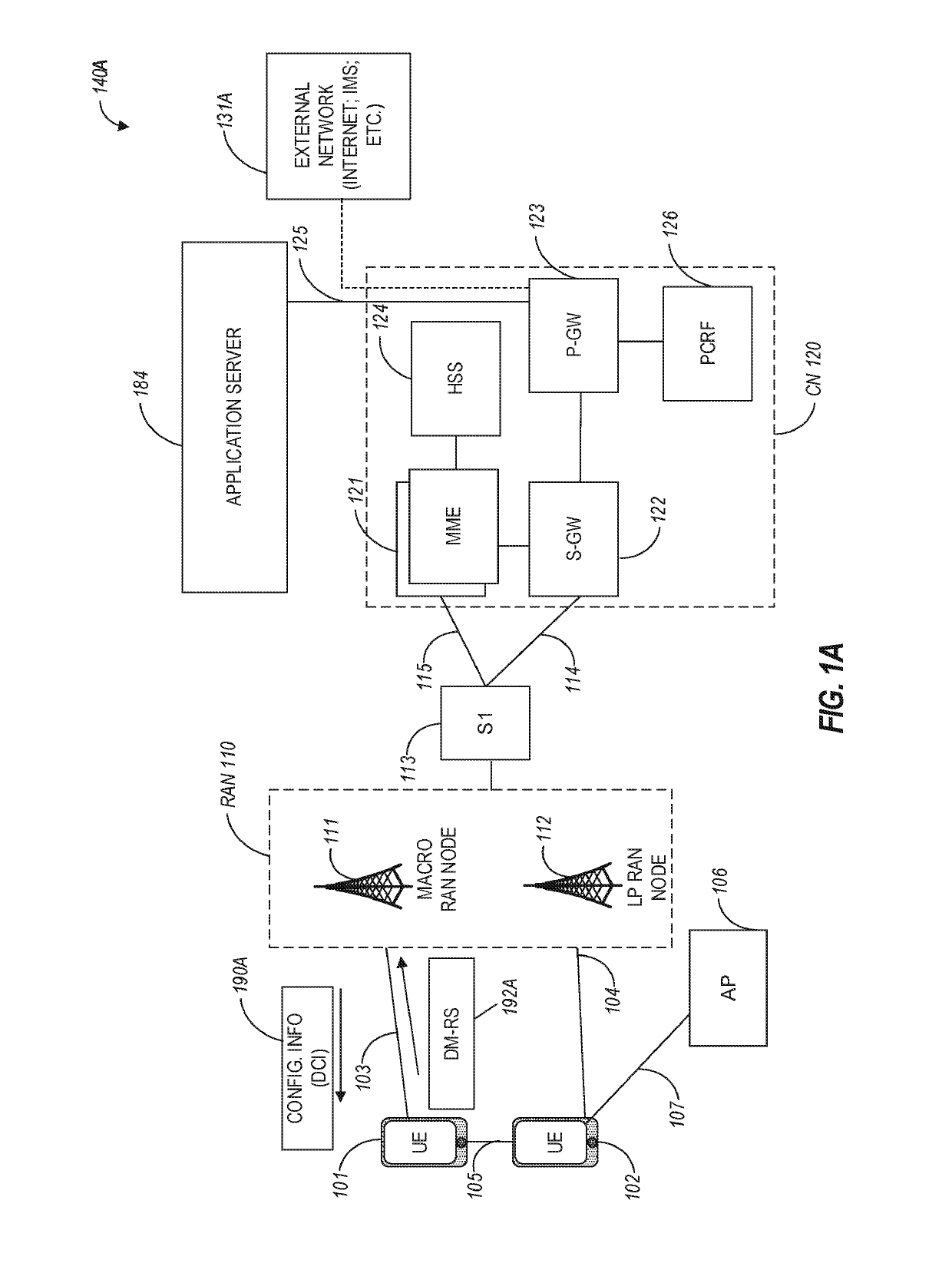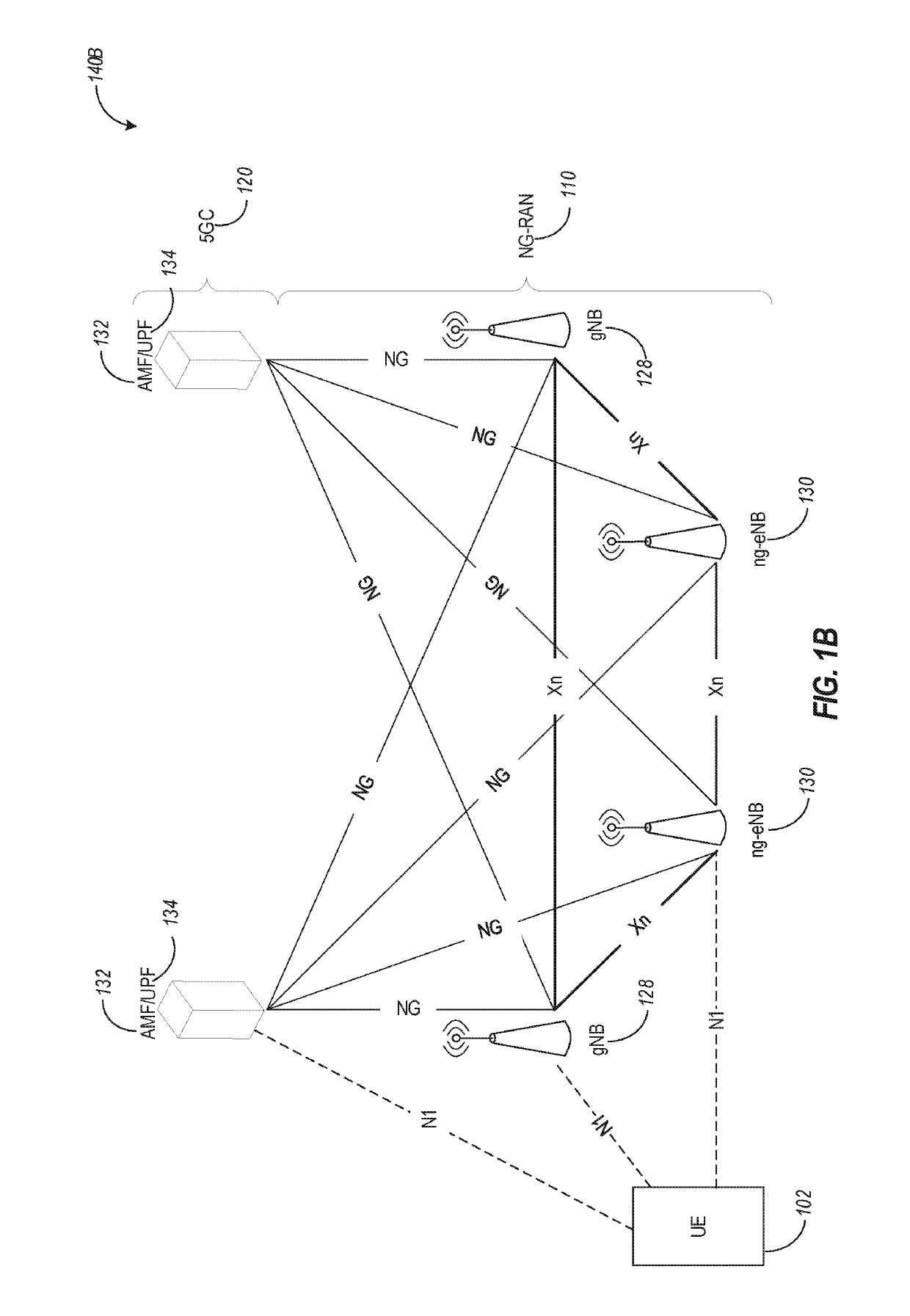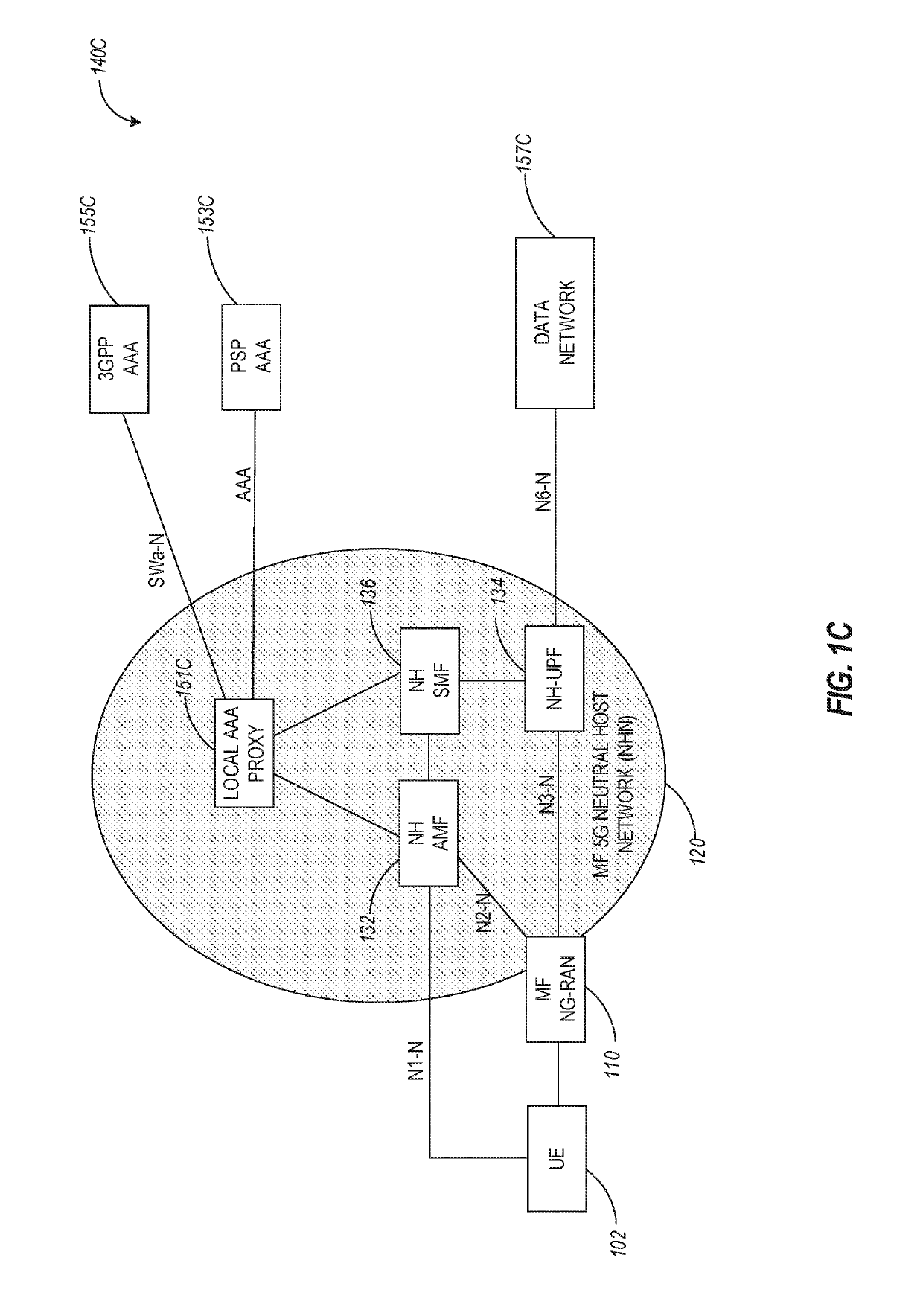One of the challenges NB-IoT systems face for
small cell support is the UL / DL link imbalance, where for small cells the base stations have lower power available compared to
macro-cells, and, consequently, the DL coverage can be affected and / or reduced.
This may result in large inter-
cell interference in dense
small cell deployments.
During this time, the device 200 in some aspects may be unreachable to the network and may power down.
Any data sent during this time incurs a
delay, which may be large, and it is assumed the
delay is acceptable.
Ensuring
forward compatibility or coexistence is one of the major issues for a distributed mode of communication in application to V2X services.
(1) Coexistence of different
transmission time intervals (TTIs) / numerologies / RATs. Potential operation with different time scales, different TTI duration using the same or different numerology within single or multiple RATs. It is well studied during the
Rel. 14-15 V2X (so-called V2X phase 2) work that integration of sidelink short TTI operation in the same spectrum using sidelink long TTI (1 ms) as a legacy
physical structure may cause issues for the UEs, which assume only long TTI operation, i.e. legacy UEs.
(2) Seamless integration of new features. Introduction of any new physical channels and procedures may negatively affect channel access and overall performance of legacy UEs. For example, if some resources are allocated for a new physical channel, e.g. positioning
signal or discovery
signal, but the legacy UE assumes them to have the legacy
physical structure of shared or
control channel, it may provide mismatched measurements for sensing procedure and channel access if supported.
(3) Compatible and extensible control signaling. As a more concrete example, in some cases, the new feature may require new control signaling to indicate additional parameters and assist new procedures. Such new signaling may not be properly decoded by legacy UEs that may
impact channel access procedures.
Moreover, the distributed mode may also employ a channel access scheme based on sensing which may involve
control channel decoding, that further complicates the introduction of any new signaling being undecodable by legacy UEs.
The presence of IBE may create significant near-far problems for the reception of signals from distant transmitters in case if a nearby
transmitter occupies adjacent frequency resources (i.e.,
frequency division multiplexing (FDM) in the same
subframe).
This is due to the fact that the near-far problem becomes a
bottleneck for the overall
system performance.
If IBE issues are not addressed, then increase of the
system bandwidth may not give a desirable effect of the improved
system performance.
Additionally, overall system performance may be saturated.
The similar issue may persist in case of using multicarrier operation or carrier aggregation approach if the leakage among different component carriers (CCs) is relatively large.
Once system loading is increased, the emission and associated near-far problems become the main limiting factors for system performance.
This approach is not flexible enough and puts a significant burden on the system design, UE complexity, and implementation since the UE needs to support multiple RF chains.
(1) From TX perspective, most of the time this option is likely to produce the highest level of IBE injected into the sidelink system BW, assuming that UE does not occupy the whole spectrum for transmission.
(2) From RX perspective, this option may suffer from the increased sensitivity to the in-channel selectivity, given that UE may experience different levels of the received power from different transmitters. The scale of this problem is growing with an increase of the bandwidth since more transmitters are expected to be
frequency division multiplexed (FDMed) in the same slot /
subframe.
However, such improvement comes at the cost of high UE implementation complexity requiring multiple TX / RX RF chains to be implemented to reduce the level of IBE down to the level of OBE.
In addition, it results in inefficient spectrum utilization and fixed partitioning of the spectrum on independent CCs each characterized by its own bandwidth and
center frequency.
Otherwise, the overall system bandwidth may be polluted by the high level of in-band emissions, even if the UE utilizes an only small portion of the allocated sidelink spectrum resources (i.e., system BW) in a given time slot /
subframe.
In some aspects, the reconfiguration of the TX / RX RF chains (i.e., the change of operating BWP) may need RF reconfiguration
delay and may cause interruption of the TX / RX operation.
In some aspects, the drawback of option 1 may reduce the flexibility of spectrum
resource management due to semi-static partitioning of the sidelink system BW on the predefined BWPs with fixed BWs and center frequencies.
A drawback of this option may include that the UE may be restricted in terms of BW of the actual sidelink transmission signal if the BW is not expected to be dynamically reconfigurable.
However, it may results in a significantly higher UE complexity in terms of TX RF filtering capabilities while having relatively small additional
gain in terms of overall system performance.
If at least one pair of overlapping channels does not meet the above timeline requirements, the UE may consider it is an error case for all UL channels in the group of overlapping channels.
The conventional LTE V2V
communication design, however, is not optimized for aperiodic traffic and may lead to persistent collisions between UEs due to long term resource reservation approach without any listen-before-talk mechanisms.
In this case, there is no need to transmit at the 1 st symbol, however, the AGC implementation overhead may increase.
In addition, it needs to be pointed out that there is a certain system tradeoff in terms of the number of LBT attempts to access the channel, given that each attempt may create a half-duplex problem for a reception at the given reference resource.
(1) A value smaller than OFDM symbol duration which at least accommodates typical
propagation time between possible interferers. This value may be 9 microseconds or other value, e.g. ⅛ of OFDM symbol with 15 kHz and normal CP. In this case, a UE may
gain channel access on time instance not aligned with neither OFDM symbol boundary nor small scale channel access boundary. In order to preserve reasonable receiving complexity, the transmitting UE may start transmission with a reservation signal which does not carry any control /
data information. It continues transmission of the reservation signal until the next small-scale channel access occasion where it switches to the transmission of useful signals such as AGC, control, data. This option may not be friendly to FDM of multiple sub-channels when the channel access
granularity is smaller than one OFDM symbols that may lead to inter-carrier and inter-symbol interference.
(2) Single OFDM symbol duration which is a function of
subcarrier spacing and CP type. In this case, similar to the previous alternative, the access
granularity may be controlled by transmitting reservation signal before actual channel access in the next small scale
transmission opportunity. This option follows the principles of OFDM multiple access where inter-carrier and inter-symbol interference is not raised due to CP
insertion.
(3) Small scale channel access
granularity value (which is assumed larger than OFDM symbol duration).
The latter variant may not be suitable if the UE is going to use multiple sub-channels, adjacent or non-adjacent.
Note that it does not preserve the possibility of collision however it can reduce its probability.
In some aspects, if at least one pair of overlapping channels does not meet the above timeline requirements, UE considers it is an error case for all UL channels in the group of overlapping channels.
In this case, if some UEs piggyback UCI on grant free PUSCH while other UEs only transmit grant free PUSCH, performance degradation is expected given the fact that different levels of inter-user interference in different resources are experienced at the
receiver.
This may also complicate the decoding implementation and structure at the
receiver side.
When multiple UEs transmit the data packet in a shared physical resource, if some UEs piggyback UCI on grant free PUSCH while other UEs only transmit grant free PUSCH, performance degradation is expected given the fact that different levels of inter-user interference in different resources are experienced at the
receiver.
This may also complicate the decoding implementation and structure at the receiver side.
One of the limiting factors in
wireless innovation is the availability in the spectrum.
One of the challenges, in this case, is that this system must maintain fair coexistence with other incumbent technologies, and in order to do so depending on the particular band in which it might operate some restriction might be taken into account when designing this system.
Furthermore, the four subframes necessary for
processing delay between UL grant and PUSCH transmission represent an additional performance constraint.
When operating on unlicensed spectrum that requires contention-based protocols to access the channel, a scheduled UL transmission is greatly degraded due to the “quadruple” contention for UEs to access the UL.
Furthermore, the four subframes necessary for
processing delay between UL grant and PUSCH transmission represent an additional performance constraint.
However, if grant-free UL transmissions are performed in FDM manner, the UEs can block each other if they have different starting positions.
Resource allocation scheme for PUCCH transmission in NR-licensed system, which does not need to cope with such channel access related contention, therefore, may not be sufficient for UL
control channel transmission in the unlicensed spectrum.
As one example, if the LBT fails in the first configured starting symbol and UE chooses a later starting symbol, it may be difficult for UE to re-
encode UCI in response to delayed PUCCH transmission.
In some aspects, the new DCI format with different size compared to legacy DCI format may be limited to UE-specific search space only.
 Login to view more
Login to view more  Login to view more
Login to view more 


